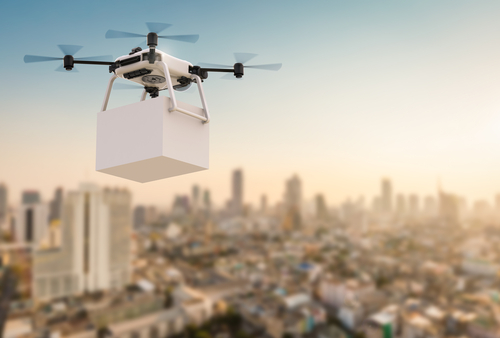Emergency Management: Send in the Drones
- Aerial Photos
- Search and Rescue
- Hazardous Spills
- Mapping
- Delivering Supplies
Drones are being used for everything from recreation to product delivery, so it is no surprise that emergency managers have found a way to employ the devices. When most people think of drones, they envision small multi-rotor “toys.” Drones, however, also can be large, fixed-wing unmanned aircraft capable of carrying passengers. Emergency management personnel have put them to use in several areas of disaster preparedness and response. Here are five ways drones are used in emergency management.
Related resource: TOP 10 EMERGENCY MANAGEMENT BACHELOR’S DEGREES ONLINE
Aerial Photos
Satellite images have long been used to determine the scope of disasters such as flooding. There is an inherent problem with those images, however. They are usually low-resolution, and satellites cannot always be accessed. Clouds, for instance, interfere with satellite reception, as do solid objects such as canyon walls.
Drones can fly lower, under the clouds, to photograph disaster conditions. This allows emergency personnel to assess which areas are a priority in receiving services. Drones can be flown to a specific target area to help responders determine where proactive intervention is necessary to avoid increased damage.
Search and Rescue
People stranded during emergencies are not always on top of tall buildings waving makeshift flags to be noticed. Sometimes they are trapped inside the buildings or cling to narrow rock shelves in steep canyons where helicopters could not fly. Drones can fly lower than other aircraft to “peek inside” buildings and take close looks into rock crevices. They can locate disaster survivors and relay the information to command centers. According to an article in Forbes, emergency responders use both flying and underwater drones to assess the danger in rescues and plan their strategies.
Larger drones can also be employed in rescue. In 2016, a plane was dispatched to evacuate two scientists from the south pole. The rescue was dangerous because during the polar night ( which lasts six months) temperatures are extremely low and light comes only from the moon and the stars. Rescuers had to weigh the dangers to themselves in the decision of how and when to retrieve the scientists. A drone could have made that decision easier by eliminating the need for a complete rescue crew.
Hazardous Spills
Ammonia spills can strip the trees for hundreds of feet. They are toxic to humans, and responders to those incidents must exercise extreme caution. Drones can fly over toxic areas to monitor the damage and, in some cases, to deliver mitigating substances. They can neutralize the danger enabling clean-up crews to deal with the incident as soon as it is safe.
Mapping
Another instance of the preference for drones over satellite images is mapping. Emergency personnel can utilize maps obtained through drone use to determine the best ways to access remote areas. They can map areas known to be prone to disasters such as flooding both when they are dry and when they are flooded to determine how and where to build levees and do other interventions to prevent disasters from happening.
Delivering Supplies
In emergencies, infrastructures are often damaged or destroyed. Ground vehicles cannot reach remote areas and planes cannot access them without verified places to land and take off. Drones, on the other hand, can take food, water, medical supplies, and other necessities to remote areas.
Drones can be employed to assess the probability of natural disasters such as flooding and they can be used to address the results of disasters after they occur. There are other ways in which emergency personnel use drones, but these five are representative of the capabilities of using the unmanned aircraft and of their advantages.
